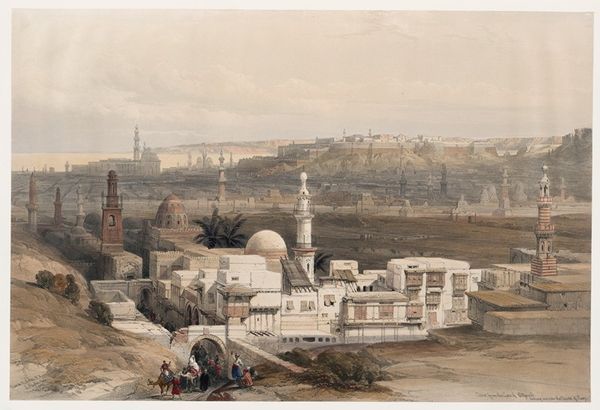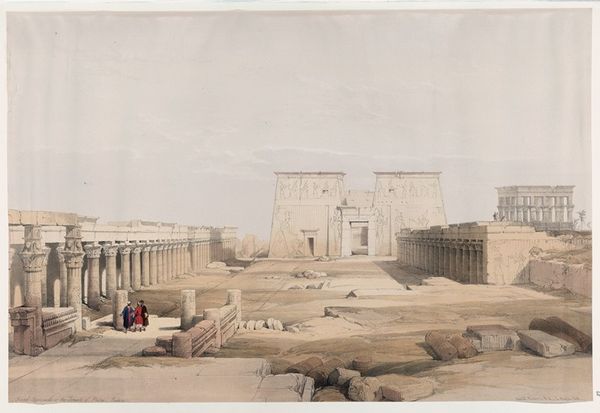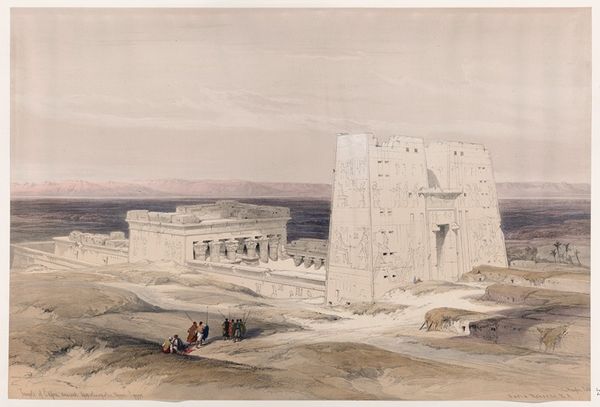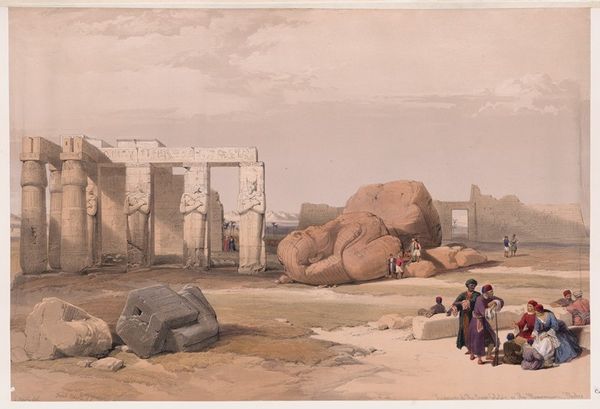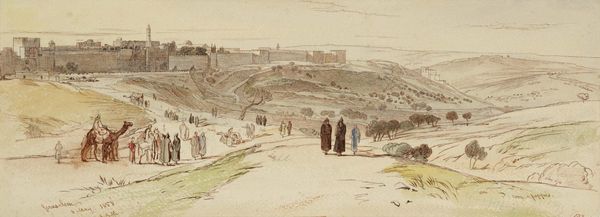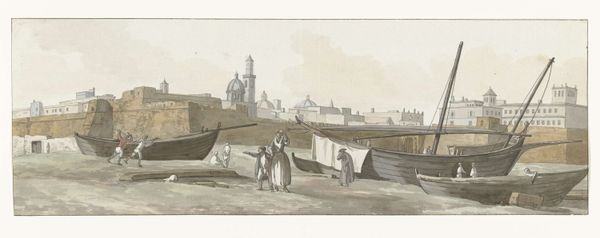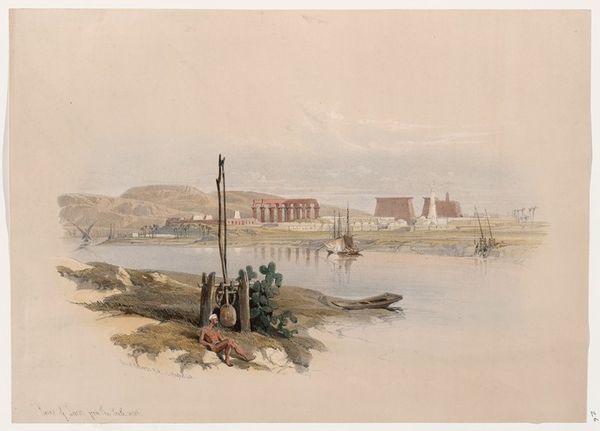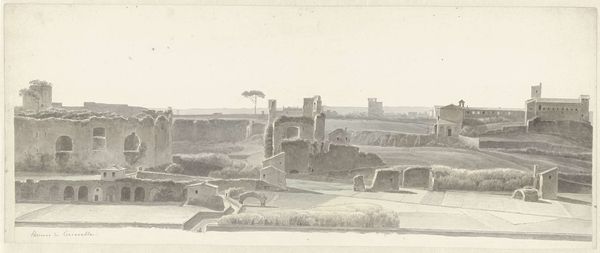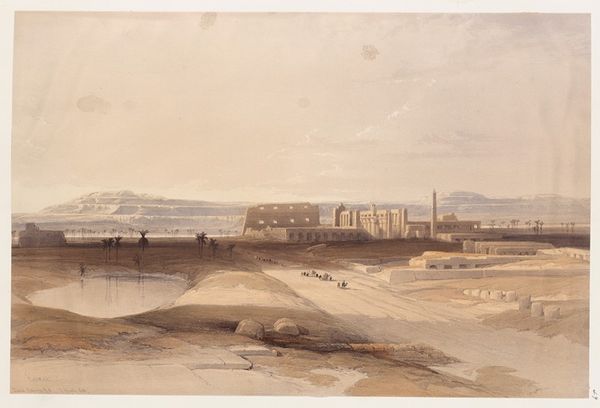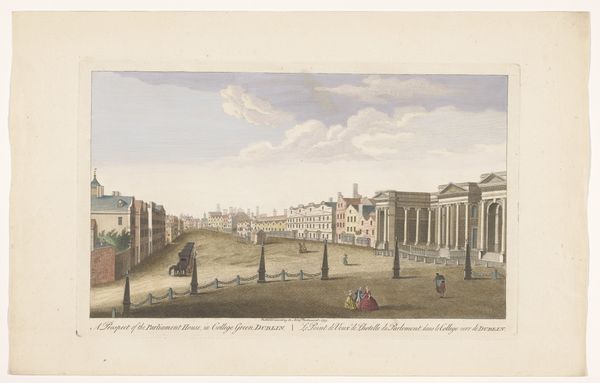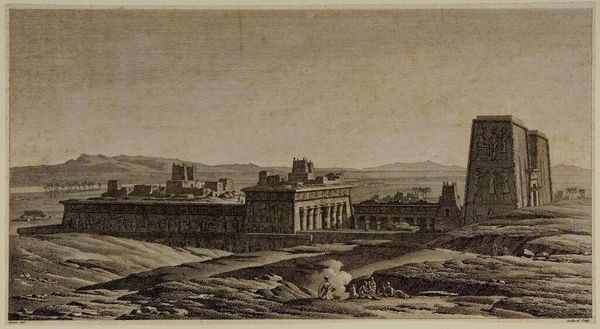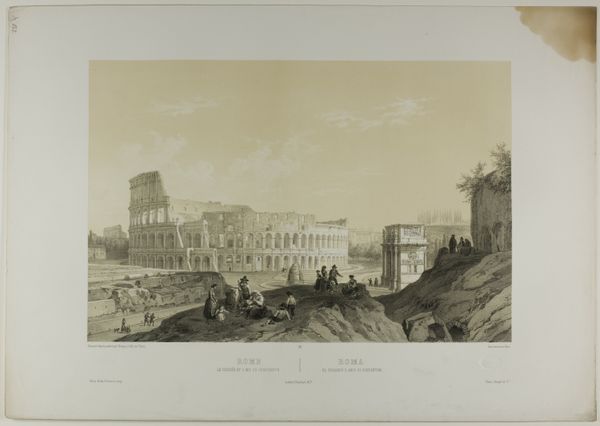![Ruins of Karnack [Karnak]. by David Roberts](/_next/image?url=https%3A%2F%2Fd2w8kbdekdi1gv.cloudfront.net%2FeyJidWNrZXQiOiAiYXJ0ZXJhLWltYWdlcy1idWNrZXQiLCAia2V5IjogImFydHdvcmtzL2Q5MTUxMTQxLTJmYjctNDk1My04MzE0LWVlNDQ0N2MxYWI5Ni9kOTE1MTE0MS0yZmI3LTQ5NTMtODMxNC1lZTQ0NDdjMWFiOTZfZnVsbC5qcGciLCAiZWRpdHMiOiB7InJlc2l6ZSI6IHsid2lkdGgiOiAxOTIwLCAiaGVpZ2h0IjogMTkyMCwgImZpdCI6ICJpbnNpZGUifX19&w=1920&q=75)
painting, watercolor
#
painting
#
landscape
#
ancient-egyptian-art
#
figuration
#
watercolor
#
ancient-mediterranean
#
orientalism
#
watercolour illustration
#
history-painting
Copyright: Public Domain: Artvee
Curator: Looking at this piece, I’m immediately transported. There's such a strange, delicate stillness in the air. It feels both ancient and timeless. Editor: That's a great way to put it. What we're observing is a watercolor illustration entitled "Ruins of Karnak" by David Roberts, created between 1846 and 1849. Curator: Right, Karnak...a monumental ruin rendered with such tenderness. The muted colours almost soften the imposing structures. It’s a very Romantic vision, isn't it? A kind of reverence tinged with melancholy. Editor: Absolutely. Roberts, as a leading figure in the Orientalist movement, was deeply invested in depicting the Near East. The watercolor, as a medium, allowed him to capture the atmosphere, the light, and also the kind of sublime vastness he sought to represent. It speaks to a Western fascination with and projection onto these ancient places. Curator: Fascinating. So it’s as much about the observer as the observed? Editor: In many ways, yes. Roberts meticulously documents the architectural details while carefully positioning figures within the scene, almost orchestrating a dialogue between the past and the present. It's also essential to consider the political climate during the work's creation. Europe had growing imperial interests in Egypt and other parts of the region, shaping the artwork's interpretation then and now. Curator: True, the composition places us firmly in a position of looking down upon these ‘ruins’. But I find the colour palette intriguing – this wash of pastel colours gives the scene a dream-like, nostalgic quality. Editor: It reflects a broader 19th-century aesthetic valuing subjective experience and picturesque scenery. By employing watercolor and this somewhat idealized light, Roberts created an image catering to a European audience eager to engage with the exotic and mysterious, with an added historical context. Curator: A clever point; it highlights the layers of context that constitute our encounter with such a piece. Editor: Indeed. Considering its role in shaping perceptions of Egypt at that time, its value now can lead us toward insightful explorations of cultural representation, political ambition, and art history all rolled into one. Curator: For me, it is more like a silent, whispering testament to enduring stones, an imagined vision as a portal through time, filtered, as it is, through both artistic vision and historical currents.
Comments
No comments
Be the first to comment and join the conversation on the ultimate creative platform.

